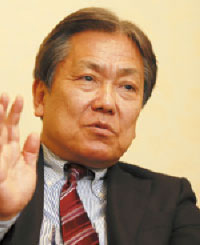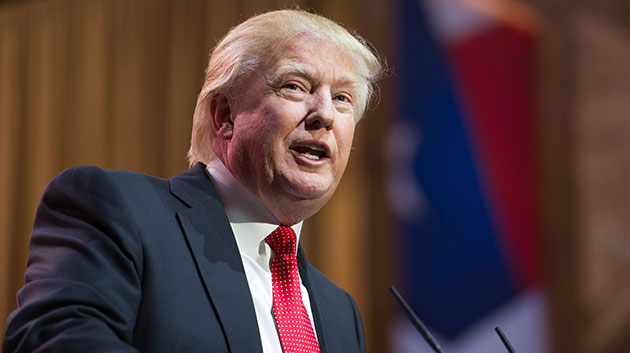What Should Japan Do After U.S. Withdraws from TPP?
Trump's Strategy Comes to Light
Donald Trump has made public his intention to announce America’s withdrawal from the TPP after his inauguration in January. What should Japan do if the TPP economic encirclement plan to stop China’s military ambitions fails?
Donald Trump’s presidential inauguration takes place on January 20, 2017. He has made public his intention of announcing America’s withdrawal from the TPP that very day.
In Japan, the extraordinary session of the Diet in December 2016 came to a conclusion to approve Japan’s joining the TPP. “There is great importance in showing the world the strategic and economic purpose of the TPP”, said Prime Minister Shinzo Abe.
Indeed the TPP served a hidden purpose to form a China encirclement network to protect safety in Asia. It was a counterplan against China’s economic and military ambitions through the AIIB: to allow tax-free trade between countries in the Asia Pacific excepting China.
There is evidently a huge gap in the way the U.S. and Japan are thinking.
So, how should Japan face the future?
Victory By Cutting Food Supplies
Trump is aiming to leave the TPP, place a heavy 45% tax on cheap Chinese products, and revive American employment and industries. During his election campaign, Trump many times said that ever since China joined the WTO, over 50 thousand American factories closed-down leaving millions unemployed.
It was after the Clinton administration that trade between the U.S. and China became more active. When China joined the WTO in 2001 and opened its markets, American companies began building factories in China because the costs were lower, and cheap Chinese products came flooding into the U.S. As a consequence, it caused a huge decline in employment and industry.
The numbers tell it all: currently the U.S. trade deficit with China stands at around US$365.7 billion per annum.
Some are of the opinion that China isn’t to blame because it is the American people who want to buy Chinese products.
But on the other hand, free trade cannot work if only one country buys and the other doesn’t. On the ethical level, China spending its profits on nuclear missiles, military submarines and man-made islands as a military facility, for want of invading neighboring territories is a problem.
In the Q&A to “On the Political Situation” given in December, Master Ryuho Okawa, founder of Happy Science said:
“Trump is going back to basics and using the idea of tariff autonomy to correct the marked trade imbalance between the U.S. and China . . . This is a Trump Revolutions of the economic sort . . . The idea is both businessman-like and military. He is trying to win without fighting: more specifically, achieving victory through cutting food supplies.
Tariff Autonomy Is a Weapon
China is not only guilty of trade imbalance; they are also guilty of unfairness. China controls currency exchange: there is a restriction on taking the Chinese Yuan currency outside of China, so they can keep it cheaper than its actual value. The cheaper the Yuan against the USD, the more they can make and export cheaper products. In contrast, they put an absurdly high 5-20% import tax on items made from rare minerals such as copper and lead that is only readily available from China.
Trump rightly claims that when the U.S. opened its markets to China, China built a protective trade wall with illegal import taxes to keep away American enterprises, manipulating the market to their advantage. So he plans to announce that China is a currency manipulator on his first day as President.
Kishore Jayabalan, director of the Rome office of liberalist think tank Acton Institute endorses Trump’s stance.
“Trump is thinking of the country”, says Jayabalan. “What he says about free trade makes perfect sense. He is saying that we cannot engage in free trade with a country that does not abide by the same principles of competition. Protecting the industries of one’s own country is not protectionism; it is important from a security point of view.”
In short, China is continuing unfair and unbalanced trade for the profits of their own country, and Trump is using tariff autonomy to try to get China to participate in fair and balanced trade. This is very characteristic of his passion for economics.
A Counter-China Strategy to Replace the TPP
Until now, The Liberty Magazine has been pushing for Japan to join the TPP. Constructing an economic alliance in the Asia Pacific to corner China and nullify their ambitions of invading other countries.
But this claim was made upon the assumption of a ‘weak America’. Barack Obama failed to correct China’s unfair and unbalanced trade. As a result, China made more money, which was used to expand their military forces.
This had an inverse effect on the U.S., with factories closing down causing a plague of unemployment. Japan was in a similar position, and back before Trump came, the only option left for Japan was to join the TPP, a ‘union-of-the-weak’.
Trump, however, announced a withdrawal from the TPP. It was a hindrance to his plan to make America Great Again economically and militarily. He will leave the union-of-the-weak and stand on equal grounds in one-against-one dealings with China to put right the unfair and unbalanced trade conditions.
In the above-mentioned Q&A, Master Okawa said:
“Unlike president Obama, Trump sees that an alliance between countries in the Asia Pacific will not make America strong. It fails because of apparent differences between the countries such as economic conditions, motivations, social infrastructure, and moral codes.”
The EU – another ‘union-of-the-weak’ – abolished goods import taxes within its borders; but the strong industries and national power are different for each country, and has now ended up being a union ‘to give money to weak countries’. As a result, it increased the financial burden on the entire EU, and wealthy countries such as Germany have more to pay out of their own pockets.
If the U.S. is withdrawing from the TPP, Japan should not hesitate to do so either: flexibility is required when situations change.
Prosperity in The U.S. and Japan Can Stop China
For the past 25 years, Japan’s GDP has been hovering at around the ¥500 trillion (US$5 trillion). GDP increases when people buy and sell things, or when companies and factories invest in facilities. So a stagnant GDP means that these things are only happening at a low rate.
Part of the reason lies in policy failures by the government and Bank of Japan that burst the bubble economy in the 1980s. But companies aren’t blameless either.
After the 1980s many Japanese companies – especially those relying on exportation –suffered from the high Japanese Yen, and moved their factories to China where the personnel costs were lower. As a result, Japanese employment rates dropped accelerating deindustrialization.
In the mean time China’s GDP increased and outstripped Japan in 2010 to stand at number 2 in the ranks of the world’s greatest economic superpowers. Overseas capital made China wealthy, and they are now using that money on missiles and military facilities. They have ‘grown’ to become the world’s greatest threat.
Then what should Japan do now?
In the Q&A, Master Okawa said:
“Companies can now evade the tax system through globalization, but what we need to do is bring back the culture of paying taxes to the motherland. It is possible to regain our dimming patriotic spirit through the action of companies.”
In other words, Japan needs to think “Japan First”.
Since around last year, the weakening Japanese Yen encouraged Japanese export companies to relocate overseas factories back into Japan. Japanese companies should return to Japan, create employment in the country, and contribute to the growth of the Japanese economy.
Employment can be extended to older people if factory personnel shortages are covered by machinery and workloads per person are reduced.
Government decision is vital in creating this trend.
More specifically, it means deregulation to free up economic activity in companies and individuals, and tax reduction: lowering the corporate tax to encourage companies to return from overseas, and lowering the consumption tax to motivate consumers. In addition, Japan should join Trump in his mission of stopping China’s unfair trading.
If the U.S. is going to withdraw from the TPP, Japan has no choice but to change course. Japan’s role in the age of Trump Revolution is to revive the economic power alongside the U.S. to become two superpowers with a common goal: stopping China’s territorial expansion.
Column
The U.S. Economy and Military Will Become Great Again
HSU Successful Management Faculty Dean

Mamiya Suzuki
Masters graduate of Waseda University, and specialist in finance, philosophy of economics, Schumpeter and Hayek.
In the world of business, whenever people of the same trade gather to form a guild, rigging takes place. It becomes socialist inside the guild, and so competition cools. This is why dealings between companies are only conducted one-against-one.
This is the same between countries. By leaving the TPP, Trump plans to trade one-on-one with other countries, which will heat up industry competition within the U.S.
The TPP is said to be free trade, but it is actually a sort of trade bloc. So from countries outside of the TPP it looks like protective trade. Trump is wary that if the TPP establishes its ‘inside rules’, countries within it will lose its autonomy.
For instance the EU, which is a trade bloc, abolished customs duties within its borders. As a result, countries like Greece have trade deficits due to Germany’s exportation campaigns.
Trump wants to do free trade between countries that mutually respect each other for their national power: power in politics, economy, diplomacy and military.
We do need rules like the General Agreement on Tariffs and Trade (GATT) when it comes to trade, but there is a limit to the advantages of trade blocs such as the EU and ASEAN.
Trump is thinking about creating jobs, unlike Obama and Hillary Clinton who only think about distributing money. Trump’s way of thinking would make a very good U.S. president.
Trump will reduce corporation and income taxes to summon American companies back to create employment and bring about economic growth. The U.S. will regain its military strength, and the USD will regain trust as the reserve currency.
This will open many doors of opportunities: for instance, if the U.S. wanted to increase the military budget, they could just print more money and government bonds.
Indeed government bonds are government debts, but they just need to print USD to repay the debt. This is possible only because the U.S. is the world’s strongest country and the USD is a reserve currency.
Trump will rebuild the U.S. economy, revive military power, and bring back national pride and a sense of mission to his people.



















